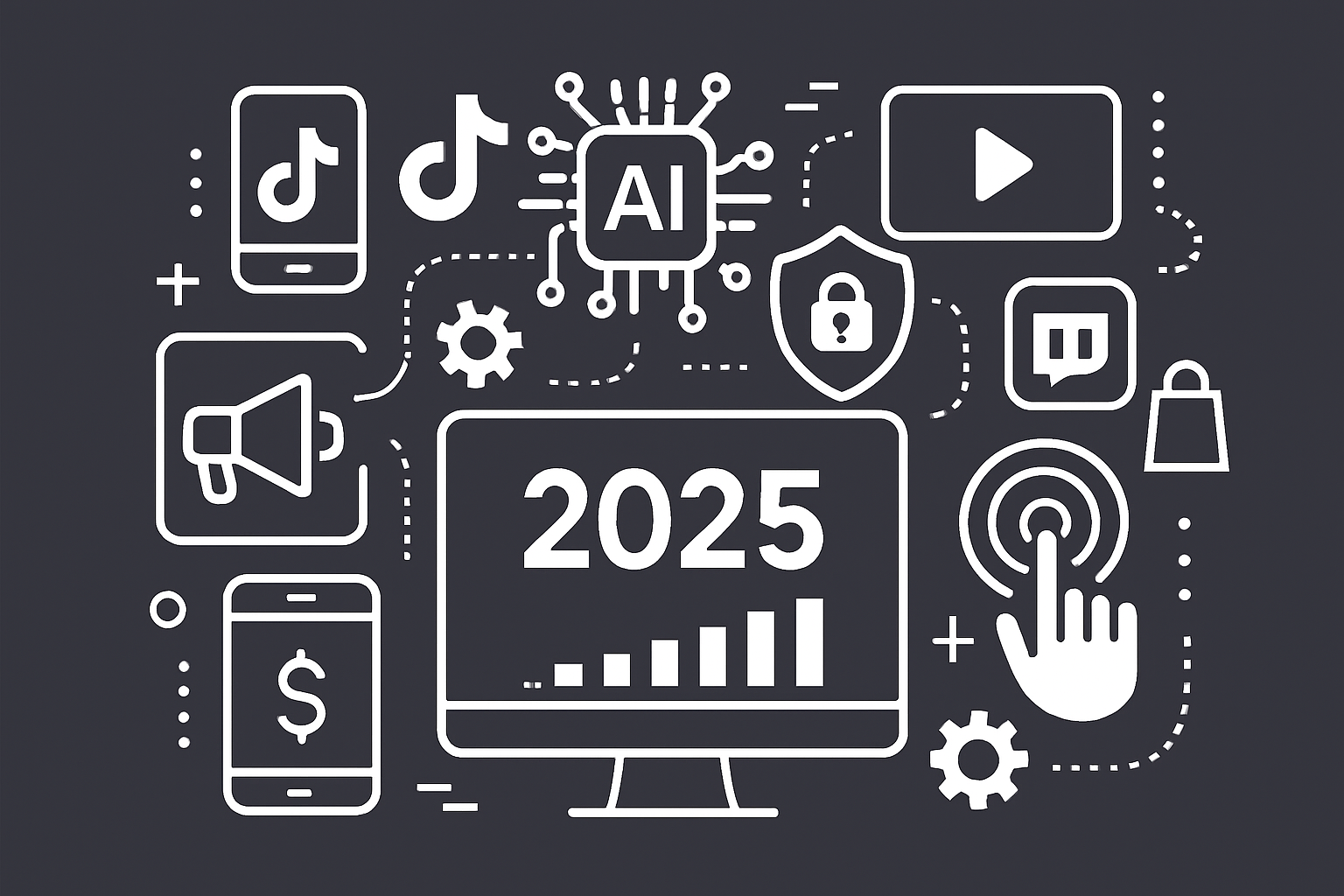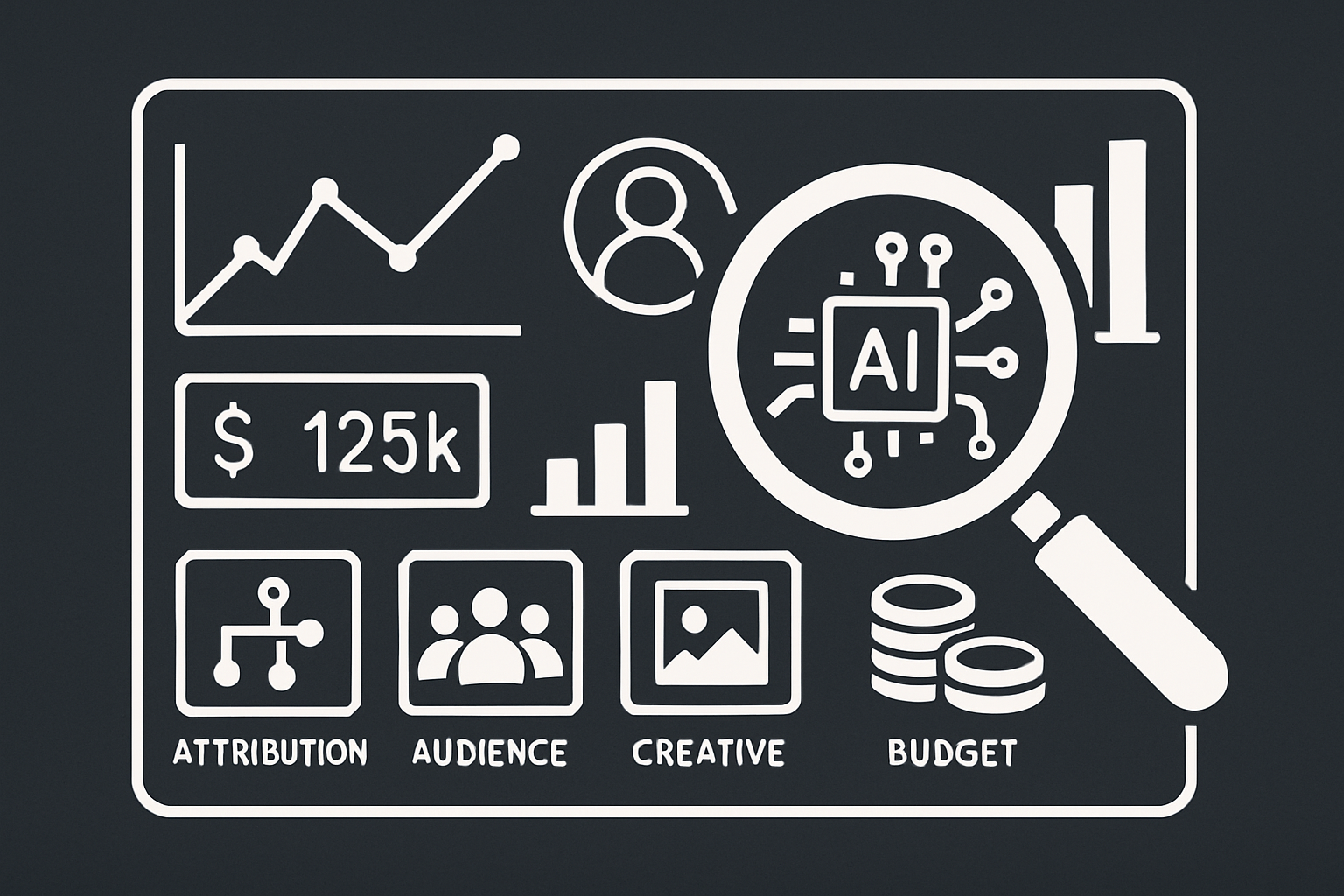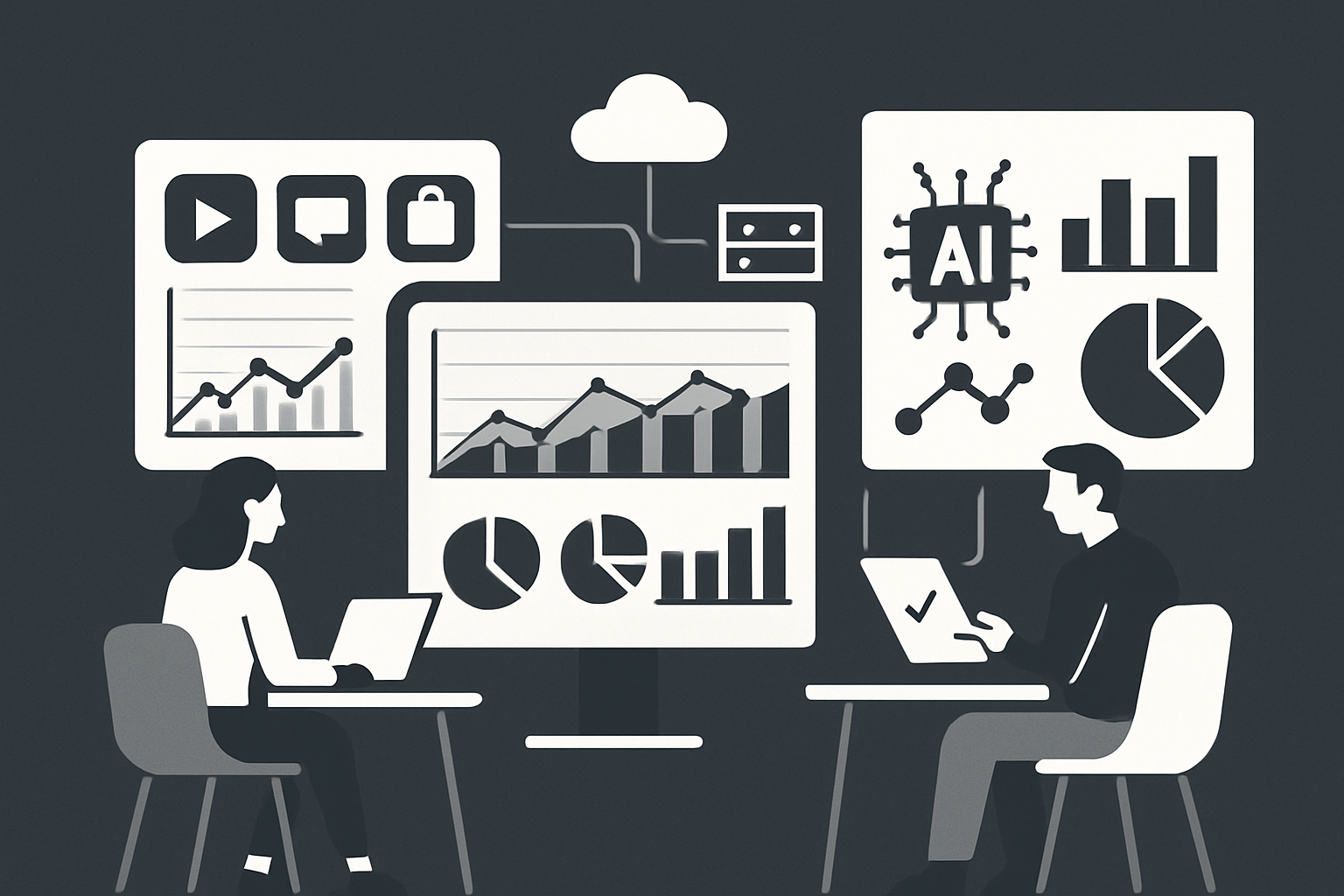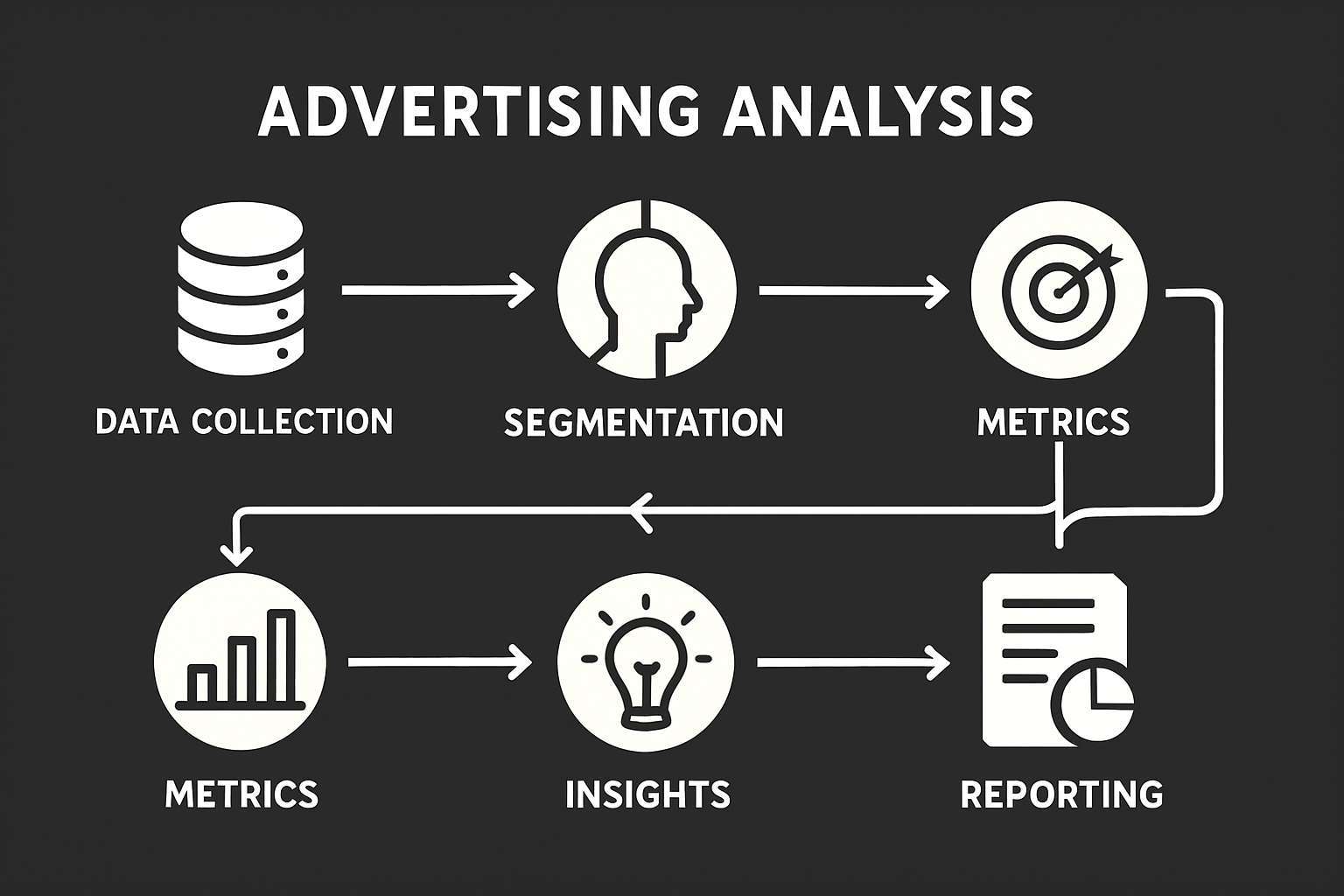Global digital advertising spend is projected to surpass $800 billion in 2025, reflecting the rapid expansion and fierce competition in the digital landscape. As advertising channels multiply and consumer behaviors evolve, the need for precise advertising analysis has never been more urgent.
Effective advertising analysis is essential for unlocking higher ROI and gaining a real edge over competitors. This comprehensive guide will provide you with advanced strategies, actionable data-driven methods, and a clear roadmap for success in 2025.
You’ll discover key trends, proven analysis strategies, must-have tools, a step-by-step analysis process, and future-proofing tactics to keep your campaigns ahead of the curve.
The Evolving Landscape of Advertising in 2025
The advertising landscape in 2025 is transforming rapidly. Shifting regulations, evolving consumer behaviors, and technological breakthroughs are redefining how brands connect with audiences. For organizations invested in advertising analysis, staying ahead of these changes is essential for sustained success.

Key Digital Advertising Trends
Digital advertising is entering a new era as marketers adapt to a privacy-first world. The deprecation of third-party cookies is leading brands to rethink targeting and measurement strategies. AI-driven creative optimization is on the rise, enabling campaigns to adapt in real time and improve performance.
Video and interactive ad formats are becoming dominant, capturing audience attention more effectively than static content. Retail media networks and commerce media are expanding quickly, offering brands fresh opportunities to reach consumers at the point of purchase.
Statista projects global digital ad spend to surpass $800 billion in 2025. According to the Global Ad Spend Forecasts 2025, algorithmic strategies and data-driven approaches are fueling this growth. For those focused on advertising analysis, understanding these trends is crucial for crafting competitive campaigns.
Consumer Behavior Changes
Consumers are demanding more personalized and relevant ad experiences than ever before. Generic messaging is quickly losing its impact, making tailored content a necessity. The rise of multi-device and cross-platform engagement means that audiences interact with brands across various touchpoints throughout the day.
At the same time, there is growing skepticism toward intrusive advertising. Building trust has become a central concern for marketers. Brands must strike a balance between personalization and respecting user privacy, a challenge that makes advertising analysis even more important.
Understanding these behavioral shifts allows organizations to optimize their advertising analysis, ensuring campaigns resonate with diverse audiences while maintaining credibility.
Regulatory & Technology Impacts
The regulatory environment is evolving swiftly. Updates to GDPR and CCPA are tightening controls on data collection and usage, directly affecting targeting and measurement. Marketers must now prioritize privacy-compliant solutions in their advertising analysis.
Technology is also reshaping campaign management. Machine learning and automation are streamlining workflows and uncovering insights that would be difficult to detect manually. A notable example is Apple’s App Tracking Transparency (ATT) framework, which has significantly limited access to user data across iOS devices.
For advertising analysis to remain effective, organizations must adopt tools and strategies that are both privacy-safe and technologically advanced.
Competitive Landscape
Competition in the digital advertising space is intensifying. Niche platforms such as TikTok, Twitch, and various retail media networks are gaining traction, offering brands new avenues for engagement. This proliferation is fragmenting audience attention, making it harder for campaigns to achieve broad reach.
A recent study found that 60% of Gen Z consumers now discover brands on platforms outside traditional giants like Facebook and Google. For marketing teams, this shift amplifies the need for robust advertising analysis to identify and prioritize the most effective channels.
In summary, the evolving landscape of 2025 demands agility, data-driven decision-making, and a commitment to continuous advertising analysis. Brands that embrace these changes will be well-positioned to thrive in an increasingly complex environment.
Core Strategies for Effective Advertising Analysis
Mastering advertising analysis requires a multifaceted strategy grounded in clear objectives, robust attribution, and continuous optimization. As advertising ecosystems grow more complex, having a systematic approach ensures campaigns not only perform, but also drive tangible business results. The following core strategies will empower you to transform raw data into actionable insights and maximize your advertising impact.

Establishing Clear Objectives & KPIs
Every successful advertising analysis initiative begins with clearly defined objectives and measurable KPIs. Without a well-articulated goal, analyzing performance becomes guesswork rather than science.
Start by setting SMART goals—specific, measurable, achievable, relevant, and time-bound. Align these goals with business outcomes such as return on ad spend (ROAS), customer acquisition cost (CAC), or lifetime value (LTV). For instance, if your goal is to increase click-through rates (CTR) by 20%, A/B testing different ad creatives can reveal which elements resonate most with your audience.
Establishing transparent benchmarks ensures your advertising analysis remains focused and enables data-driven decisions. Regularly review and refine your KPIs to reflect changes in strategy or market conditions, maintaining alignment with overarching business objectives.
Multi-Channel Attribution
Understanding which channels and touchpoints drive conversions is a cornerstone of effective advertising analysis. With consumers engaging across multiple platforms, attributing credit accurately is essential for optimizing spend.
There are several attribution models to consider:
| Model | Description | Best For |
|---|---|---|
| First-Touch | Credits the first interaction | Awareness campaigns |
| Last-Touch | Credits the final conversion step | Direct response |
| Multi-Touch | Distributes credit across touchpoints | Complex, multi-channel |
Despite the advantages, only 34% of marketers currently use multi-touch attribution, according to eMarketer. Selecting the right model depends on your campaign objectives and customer journey complexity. Integrating multi-channel attribution into your advertising analysis uncovers the true value of each platform, informing smarter investment decisions.
Segmentation & Audience Insights
Segmentation is the backbone of personalized advertising analysis. By breaking down audiences into demographic, psychographic, and behavioral groups, you can tailor messages that resonate on a deeper level.
Leverage data from purchase history, browsing behavior, and engagement patterns to create detailed audience personas. For example, segmenting users by purchase intent often reveals high-converting groups that warrant additional focus. Behavioral segmentation enables you to address the unique needs and motivations of each customer segment.
Utilizing advanced segmentation in advertising analysis not only boosts conversion rates but also enhances customer satisfaction by delivering relevant, timely messages.
Creative & Message Analysis
Analyzing creative assets is a vital component of advertising analysis. Evaluating metrics such as engagement rates, ad recall, and sentiment provides actionable feedback on what works—and what does not.
Consistency in brand messaging across all channels is equally important. Disjointed messaging can erode trust and dilute campaign effectiveness. Use creative testing to compare different visuals, headlines, and calls-to-action. Identify which elements contribute most to your objectives, then refine your creative strategy accordingly.
A robust advertising analysis framework for creative performance ensures your campaigns remain fresh, relevant, and aligned with brand values.
Budget Allocation & Optimization
Optimizing budget allocation is where advertising analysis truly drives ROI. Shifting spend to top-performing channels maximizes impact while minimizing waste. Modern tools leverage predictive analytics and AI to recommend optimal budget splits based on real-time performance data.
For example, the rise of AI-powered ads is fueling growth in the global media industry, enabling faster, smarter budget decisions. According to AI-Powered Ads Drive Growth, leveraging AI-driven insights can significantly enhance the precision of your budget allocation.
Continuously monitor, test, and refine your budget strategies to adapt to changing market dynamics and emerging opportunities. Effective advertising analysis ensures every dollar spent contributes to measurable business outcomes.
Essential Tools & Technologies for Advertising Analysis in 2025
As digital campaigns become more complex, the right tools for advertising analysis are critical. In 2025, marketers need advanced solutions to keep pace with new platforms, privacy requirements, and AI-driven opportunities.

Advanced Analytics Platforms
Successful advertising analysis starts with robust analytics platforms. Google Analytics 4 and Adobe Analytics lead the market, offering real-time data, cross-device tracking, and customizable reports.
| Platform | Real-Time Data | Cross-Device Tracking | AI-Powered Insights |
|---|---|---|---|
| Google Analytics 4 | Yes | Yes | Yes |
| Adobe Analytics | Yes | Yes | Yes |
These platforms help marketers visualize campaign performance and compare results across channels. Integrating such tools into your advertising analysis workflow ensures accurate measurement and actionable insights.
AI and Machine Learning Applications
AI and machine learning are transforming advertising analysis by unlocking predictive analytics and anomaly detection. Marketers can now use algorithms to spot underperforming segments, forecast trends, and optimize campaigns in real time.
For example, Meta's AI Advertising Automation signals a future where campaigns are fully automated, offering new opportunities for advertising analysis. Machine learning models improve targeting, creative testing, and budget allocation, driving higher ROI.
Data Integration & Visualization
Unified dashboards are crucial for effective advertising analysis, especially in a multi-channel world. Marketers rely on data connectors to pull metrics from ad platforms, CRM systems, and web analytics into one place.
Key features of modern dashboards:
- Cross-channel performance visualization
- Customizable reports for stakeholders
- Real-time alerts for campaign anomalies
With integrated visualization, teams can quickly identify trends and adjust strategies for maximum impact.
Privacy-Compliant Measurement Solutions
The shift to privacy-first advertising analysis demands new tools for data collection and measurement. Server-side tracking and consent management platforms help marketers gather data responsibly while respecting user privacy.
Popular privacy-compliant solutions include:
- Server-side analytics scripts
- Consent management platforms
- Aggregated event measurement tools
Adopting these tools keeps advertising analysis compliant with regulations like GDPR and CCPA, without sacrificing campaign insights.
Marketing Mix Modeling
Marketing mix modeling brings econometric analysis to advertising analysis, combining both online and offline data for a holistic view. By assessing channel effectiveness, marketers can make informed decisions about budget allocation.
A typical workflow includes:
- Collecting sales, media spend, and external factor data
- Building regression models to evaluate impact
- Optimizing the marketing mix based on findings
This approach ensures that advertising analysis reflects the full customer journey, not just digital touchpoints.
Step-by-Step Guide to Conducting Advertising Analysis
Navigating advertising analysis in 2025 requires a disciplined, data-driven approach. This guide breaks down the essential steps, ensuring your campaigns remain competitive and measurable in a rapidly evolving digital landscape.

Step 1: Define Campaign Objectives and KPIs
Begin by clarifying the goals for your advertising analysis. Are you aiming to increase brand awareness, generate leads, or drive sales? Each objective should be tied to a measurable KPI.
Adopt the SMART framework—Specific, Measurable, Achievable, Relevant, and Time-bound—for setting campaign goals. For example, instead of "increase conversions," set a target such as "boost conversions by 15% within Q1."
Align objectives with business outcomes. If launching a new product, set a return on ad spend (ROAS) target or identify a cost per acquisition (CPA) threshold. These metrics form the foundation of effective advertising analysis.
Step 2: Collect and Prepare Data
Robust advertising analysis relies on comprehensive, clean data. Aggregate information from ad platforms, CRM systems, and web analytics tools to capture a complete campaign picture.
Prioritize data accuracy. Cleanse datasets by removing duplicates, correcting errors, and normalizing formats. This ensures consistency across sources and prevents skewed results.
Consider integrating advanced frameworks that support unified data collection, especially as privacy regulations evolve. Leveraging tools capable of server-side tracking and consent management will future-proof your advertising analysis process.
Step 3: Segment Audiences and Channels
Precise audience segmentation is at the heart of advertising analysis. Use demographic, psychographic, and behavioral data to divide your audiences into meaningful groups.
Map customer journeys to understand how users interact across different channels and devices. This reveals patterns like which segments respond best to specific messages or platforms.
Effective segmentation enables tailored messaging and higher engagement. For example, creating segments based on purchase intent allows you to allocate budget more efficiently and improve conversion rates.
Step 4: Analyze Performance Metrics
With data prepared and audiences segmented, dive into performance metrics. Monitor impressions, clicks, conversions, and engagement across all active campaigns.
Compare results to industry benchmarks and your historical data. This context highlights what’s working and where adjustments are needed. Use visualization tools to make sense of complex data sets.
A sample table to summarize key metrics:
| Metric | Campaign A | Campaign B | Industry Benchmark |
|---|---|---|---|
| CTR (%) | 2.1 | 1.7 | 1.5 |
| Conversion (%) | 5.0 | 3.8 | 4.0 |
| ROAS | 4.2 | 3.1 | 3.5 |
Regularly reviewing these numbers is vital for ongoing advertising analysis.
Step 5: Attribution and ROI Calculation
Attribution models help assign value to each channel and touchpoint in the customer journey. Choose from first-touch, last-touch, or multi-touch models, depending on your campaign complexity.
Apply your chosen model to evaluate how each interaction contributes to conversions. This provides a clearer view of true campaign effectiveness beyond simple last-click analysis.
Calculate ROI holistically by considering all touchpoints—online and offline. Accurate attribution is essential for maximizing the impact of your advertising analysis and justifying budget decisions.
Step 6: Identify Insights and Optimization Opportunities
Now, transform raw data into actionable insights. Look for patterns such as high-performing audience segments, creative variations with the best engagement, or channels delivering superior ROI.
Leverage AI-driven frameworks, like the Agentic Multimodal AI Framework, to uncover hidden growth opportunities and automate the identification of underperforming areas. These technologies can drastically enhance your advertising analysis by providing hyper-personalized recommendations.
Prioritize optimization actions—such as reallocating budget to top-performing segments or testing new creative approaches—to maintain a competitive edge.
Step 7: Report and Communicate Findings
Conclude your advertising analysis by translating insights into clear, actionable reports. Tailor your communication style to your stakeholders—executives may prefer high-level dashboards, while marketing teams need in-depth breakdowns.
Use data visualization to make complex findings accessible and impactful. Highlight key takeaways, recommended actions, and next steps.
Consistent, transparent reporting not only demonstrates the value of advertising analysis but also fosters data-driven decision-making across your organization.
Future-Proofing Your Advertising Analysis Approach
Staying ahead in advertising analysis requires a proactive approach. As industry dynamics shift, adapting your methods is critical for ongoing success. The strategies below will help ensure your analysis remains relevant and effective, no matter how the landscape evolves.
Adapting to Privacy and Regulatory Changes
Privacy regulations are rapidly changing how data is collected and used in advertising analysis. Laws like GDPR and the latest CCPA updates are making third-party data less accessible, forcing a shift toward first-party data strategies.
To maintain measurement accuracy, prioritize collecting consented, high-quality data directly from your audience. Invest in privacy-compliant analytics tools and server-side tracking solutions. Consider implementing a robust consent management platform to handle permissions efficiently.
For more information on building privacy-safe measurement frameworks, explore Google's Privacy Sandbox. Proactive adaptation to privacy changes will ensure your advertising analysis delivers reliable insights.
Embracing AI and Automation
AI and automation are transforming advertising analysis by streamlining data processing and revealing actionable trends. Machine learning can assess vast datasets, flag anomalies, and predict campaign outcomes with greater speed and precision.
Automated creative testing is increasingly popular, allowing marketers to optimize ad spend dynamically. AI-driven tools can identify underperforming segments and suggest tailored adjustments in real time.
By integrating AI, you can elevate your advertising analysis to new levels of efficiency and accuracy, freeing up your team to focus on strategic decision-making.
Continuous Learning and Skill Development
The field of advertising analysis is evolving quickly, making ongoing education essential. Upskilling your team in analytics, data science, and the latest platforms will help you maintain a competitive edge.
Encourage certifications in analytics tools or digital marketing. Foster a culture where team members regularly attend industry webinars, conferences, and workshops. Staying current with best practices ensures your advertising analysis remains effective and innovative.
Investing in your team's expertise not only boosts morale but also enhances the quality of your analysis and recommendations.
Building Resilient Data Strategies
A resilient data strategy is foundational to future-proof advertising analysis. As technology and platforms change, flexible infrastructure enables you to adapt quickly to new requirements.
Adopt scalable analytics solutions that integrate data from multiple sources. Ensure you have unified dashboards for a holistic view of campaign performance. Data governance policies and regular audits will help maintain data quality and compliance.
Preparing your analytics stack for emerging channels and technologies means your advertising analysis won’t fall behind as the market shifts.
Anticipating Market Shifts
Anticipating shifts in consumer behavior and platform popularity is vital for sustainable advertising analysis. Monitor evolving trends, such as the rise of new social or retail platforms, and be ready to pivot strategies as needed.
Regularly evaluate competitors’ moves and emerging audience preferences. Consider running pilot campaigns on niche platforms to test new opportunities before scaling.
By staying alert and responsive, your advertising analysis can guide your brand through market uncertainty and ensure continued growth.